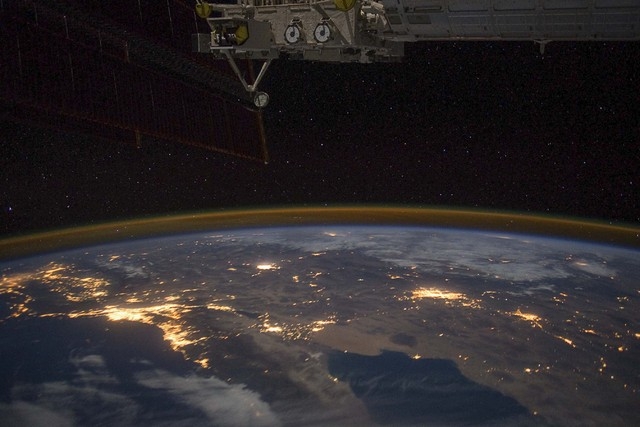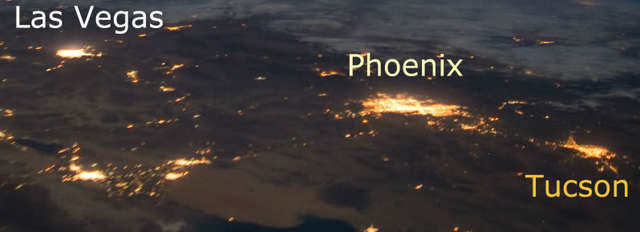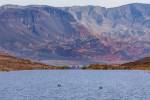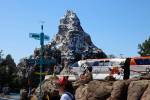Interest in dark night rises, even in Vegas
Bill Dickinson heads up one National Park Service site that can’t escape the famous glare of Las Vegas, but he would prefer to be left in the dark.
The superintendent for Lake Mead National Recreation Area is part of a growing movement to curb light pollution and preserve the night sky for dark-loving animals and stargazing people alike.
Dickinson said it doesn’t take much to understand the value of a truly dark sky. All you have to do is spend a night at Great Basin National Park in Nevada or Bryce Canyon National Park in Utah and see the thick white band of the Milky Way stretching from horizon to horizon.
“It’s hard not to be an advocate for night skies when you’ve had the opportunity to experience (them),” he said. “Many folks growing up in Las Vegas have never experienced that. They don’t even know what they’re missing.”
Right now, Dickinson is in Flagstaff, Ariz., for a three-day summit on light pollution hosted by the world-famous Lowell Observatory.
Much of the focus at the summit will be on the Colorado Plateau, an 83 million acre swath of Arizona, Utah, Colorado and New Mexico that includes more than two dozen National Park Service sites and not a single large city.
“It has some of the darkest night sky conditions in the world,” Dickinson said.
Lake Mead National Recreation Area sits right on the plateau’s southwestern doorstep, but so does one of the world’s most remorseless traffickers in light pollution.
The dome of light created by Las Vegas can be seen from up to 200 miles away, so there is no place in Dickinson’s park that is completely beyond the city’s glow. But that doesn’t stop Lake Mead from hosting stargazing events.
Dickinson said there are plenty of dark places to be found within the 1.5 million acre recreation area, which includes portions of Grand Canyon-Parashant National Monument in a part of northwestern Arizona designated earlier this year as an International Night Sky Province.
He thinks preserving and even improving such “night-sky resources” can be cheaply and easily accomplished and that people will happily volunteer to make the change — even in a place as in love with lights as Las Vegas.
“What’s particularly exciting is it’s the kind of opportunity we can all do something about. With light pollution, you can reverse it like that,” he said with a snap of his fingers. “You just turn the light off.”
Specifically, advocates for darkness encourage people to convert their homes and businesses to night-sky sensitive lighting, namely less intense illumination that is pointed at the ground and shielded to keep it from shining needlessly into the sky. A property’s light footprint can be further diminished by turning off outside lights altogether or installing motion detectors to limit their use.
Dickinson said participation is entirely voluntary, but those who do adjust their lighting often find it to be just as effective and no more costly than brighter, less precise forms of illumination. In fact, it can be cheaper, since dimmer, more targeted lighting tends to be more energy efficient.
Beyond the awe-inspiring sight of a sky filled with stars, darkness serves a key role in many natural systems. Researchers have begun to document the decline of fireflies around the world, with light pollution suspected as a major cause.
The cycle of bright days and dark nights also plays a role in human biology. “The body expects it to get dark at some point so it can sleep,” Dickinson said. “Maybe not in Vegas, but most places.”
All joking aside, Dickinson said he foresees a day — perhaps a decade or two from now — when even the resorts on the Strip will choose to dim things down a bit. After all, he said, there was a time when water conservation was not a priority on Las Vegas Boulevard and beyond, but today many resorts use such practices as a selling point.
Scott Kardel is executive director of the Arizona-based International Dark-Sky Association, a 26-year-old advocacy group dedicated to fighting light pollution. The organization has issued special dark-sky designations to several parks and communities within a few hours’ drive of Las Vegas, including Death Valley National Park in California, the aforementioned Grand Canyon-Parashant and the cities of Flagstaff and Sedona, Ariz.
Kardel doesn’t think Las Vegas will ever qualify as an International Dark Sky Community, at least not as long as it promotes itself with a giant flashlight atop a certain local pyramid that shall remain nameless.
“I think the Vegas Strip will always be the Vegas Strip,” he said. “The Strip is excessive — in all regards. That’s really the point, right?”
But there is still plenty that can be done away from the resort corridor to help bring back the night elsewhere in Southern Nevada, Kardel said. “No community is a lost cause.”
Contact Henry Brean at hbrean@reviewjournal.com or 702-383-0350. Follow @RefriedBrean on Twitter.

What does Las Vegas look like from space? A night view of the planet shows the relative brightness of areas around the world.





























